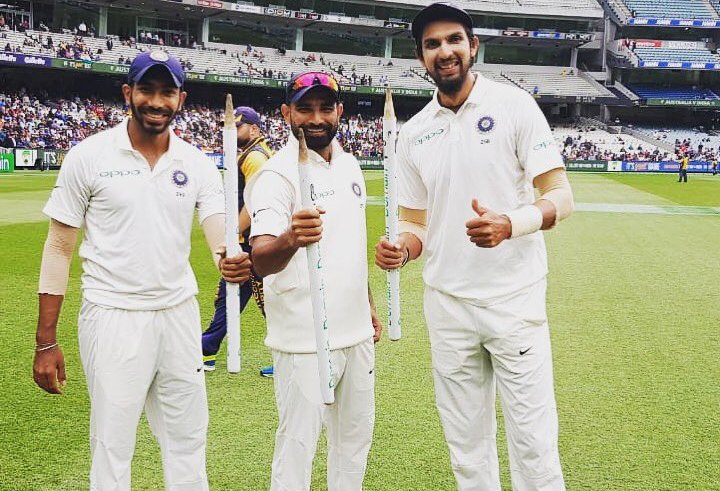
Veteran fast bowler Ishant Sharma feels "better communication" in addition to the years of experience between him, Mohammad Shami and Umesh Yadav are the key factors behind the rise of India’s pace battery under Virat Kohli's leadership.
See Also: Indian pace attack “one of the most lethal” going around, says R Ashwin
"Look during Dhoni's time, some of us didn't have that much of experience. Also, the fast bowlers would be rotated a lot, that's also a reason that consistency as a group couldn't be achieved. If you know that you are a pool of 3-4 fast bowlers (now with Jasprit Bumrah), that increases communication. Earlier, there would be 6 to 7 bowlers, communication wasn't there,” Ishant told reporters during an interaction at the Feroz Shah Kotla after the Ranji Trophy encounter against Hyderabad.
"But when Virat took over, we have all by then gained a fair amount of experience and that helped. Now when you play more, stay in that dressing room more, spend more time with the team compared to family, discussions are free and frank. And then you start enjoying when you go out there in the middle. That's a different feeling," he added.
Ishant now bowls in short bursts and his pace has also gone up. Moreover, the lanky paceman doesn’t bowl back of length deliveries anymore which were a routine under Dhoni, who used him for extended spells.
"From the beginning, I got a tag and people started calling me "workhorse", "workhorse". So seniors at that time would tell me that you need to bowl 20 overs and if you even give 60 runs, you will still end up getting three wickets.
"So that works on your mind that you have to bowl 20 overs. So you bowl back of length deliveries and batsmen start leaving those till they get set and then come back to attack you. And you end up giving away 80 runs."
Earlier, Ishant used a face a lot of criticism but he wasn’t actually getting a sound advice for his problems in bowling technique.
"The problem in India is that everybody tells you about the problem but no one tells you the solution. Now knowing the solution is an important aspect," he said.
"I have realized that maybe one or two people worked on the solutions. The problem everyone can tell you but one who is a good coach will tell you about solutions."
However, things change when he decided to play county cricket and got the opportunity to work with former Australia pacer Jason Gillespie.
"A lot of people would tell me that I need to increase the pace of my fuller deliveries. No one told me how to do that? It was when I went to play county cricket, Jason Gillespie gave me the solution," said Ishant, who played for Sussex under Gillespie's coaching.
"Gillespie told me that in order to increase the pace in fuller deliveries, you don't just release it but hit the deck so that it should target the knee roll," he continued.
The 96-Test veteran also revealed how Gillespie changed his training methods to get fruitful results.
"Like first, I would put cones (on good length spots) during nets. But that's okay for a youngster, who wants to get his areas right but for someone like me, I need to see where my ball is finishing rather than where it's pitched. The practice is almost the same but the outcome is different. Gillespie's instructions ensured that my fuller delivery is faster now."
(With PTI inputs)




